Have you ever sat by a pond or a river and watched the numerous bugs flutter over the water? One of the most fascinating creatures to watch is the dragonfly. It has shiny wings and moves swiftly, chasing after smaller bugs in an almost mesmerizing way. But have you ever wondered what they eat? Do dragonflies eat wasps?
Dragonflies mostly eat small insects, and yes, this includes wasps. They hunt great and usually eat mosquitoes, flies, and other small bugs. However, they will grab a wasp out of the air if they get a chance. This behavior helps control the number of insects in their living areas.
Knowing what dragonflies eat and how they get their food helps us understand their importance in nature. So, if you want to learn more about these creatures, how they hunt, and what else they might eat, keep reading!
Dragonfly’s Diet
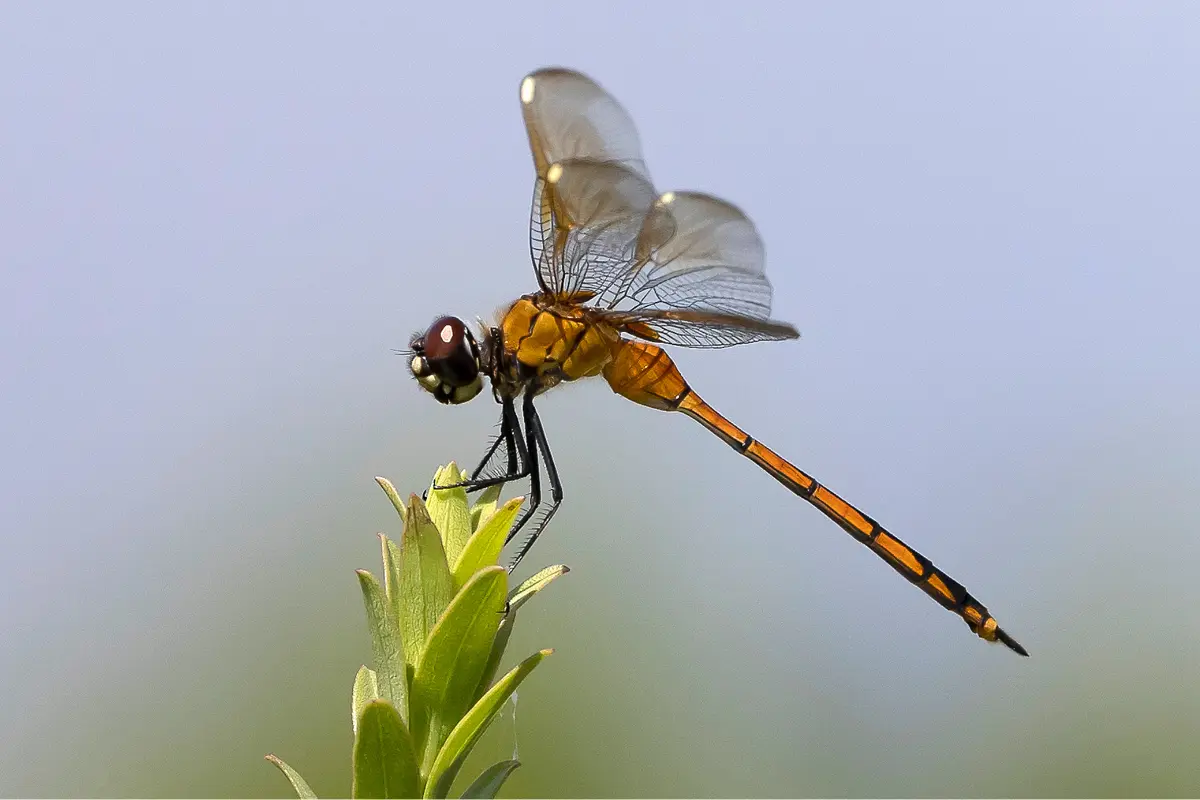
Dragonflies are colorful and shiny insects known for their incredible flying skills. They are meat-eating bugs that belong to the Odonata order and are hungry for other insects. While flying, they catch their food, like mosquitoes, flies, bees, ants, and even smaller dragonflies. Despite their lovely wings and bright colours, they are fierce hunters with smart hunting methods.
Dragonflies are experts in flying and catching their prey. They have excellent eyesight, which helps them see their food from far away, plan a perfect path to catch it, and then quickly grab it with their legs that have spines. This ability to quickly plan complicated paths makes them one of the best insect hunters, succeeding more than 95% of the time. People often call them the “hawks” of the insect world.
Common Prey for Dragonflies
Mosquitoes
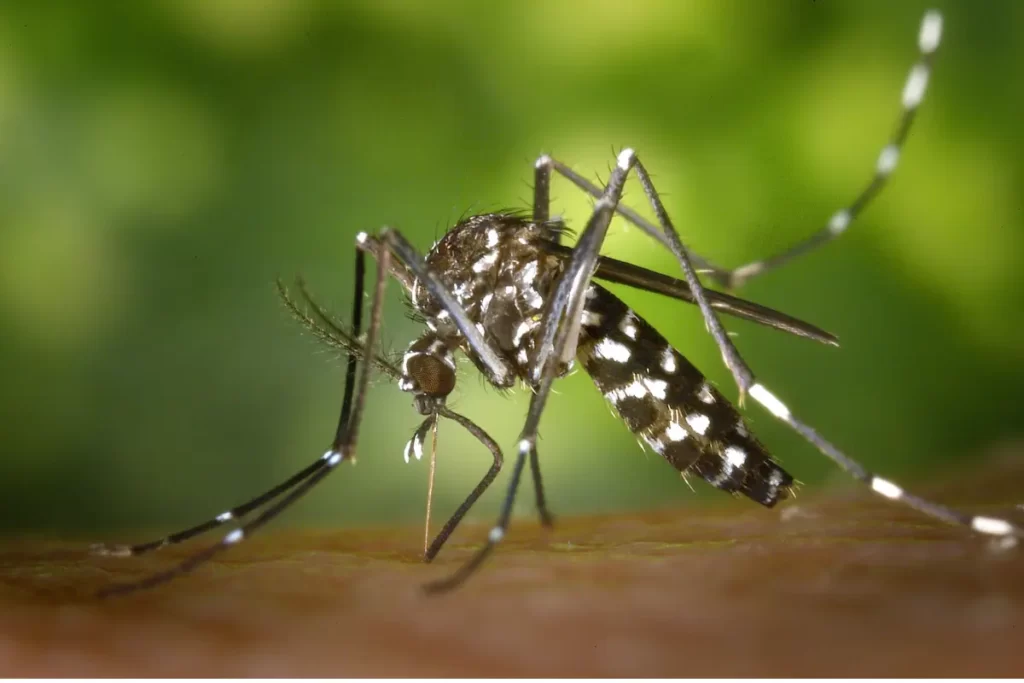
Dragonflies and mosquitoes have been predators and prey for millions of years. Dragonflies have special hunting methods to catch mosquitoes, both as babies and adults. Baby dragonflies, called nymphs, eat mosquito babies in the water. When they become adults, they catch and eat adult mosquitoes while flying.
Dragonflies are very good at hunting mosquitoes, which helps control the number of mosquitoes and reduces the spread of diseases they carry. This is especially important in warm areas where these diseases are common. Protecting wetlands, where dragonflies live, is key to using their mosquito-killing ability and protecting other animals and plants.
Flies
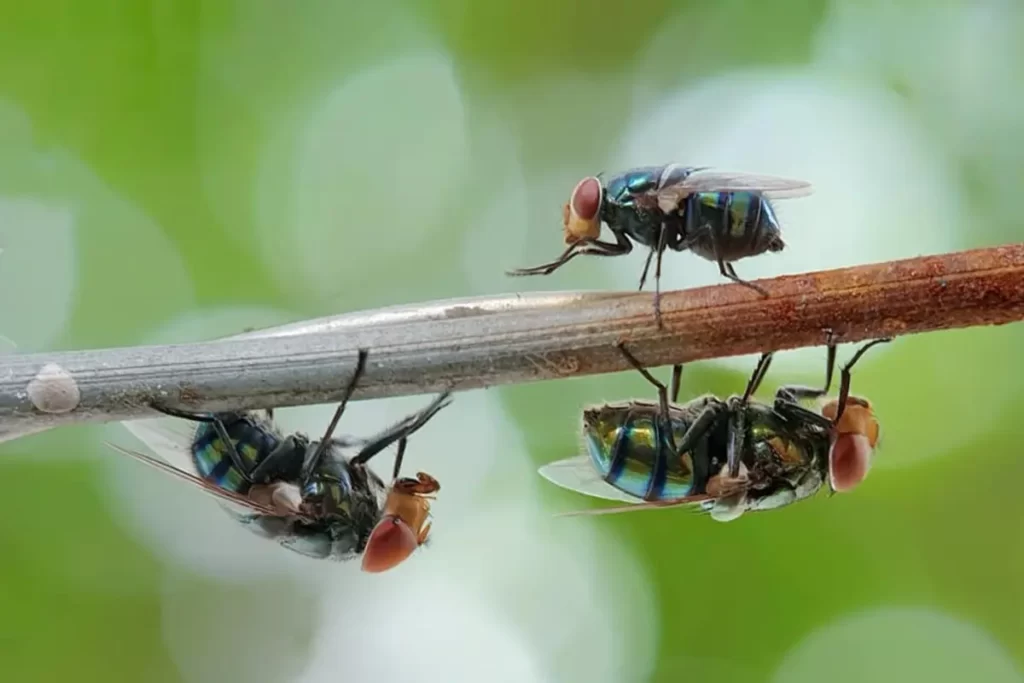
Dragonflies often eat flies, a part of the Diptera order that includes houseflies, fruit flies, and gnats. Flies can be found worldwide and make up a large portion of the dragonfly’s diet globally.
Although catching flies is challenging due to their speed and ability to change direction quickly, dragonflies are quicker and have excellent vision. The diet of a dragonfly varies depending on its location and food availability.
In some areas, flies are a primary food source, while dragonflies consume more mosquitoes or ants in others. By eating flies, dragonflies help control the fly population, which benefits the environment.
Bees and Wasps
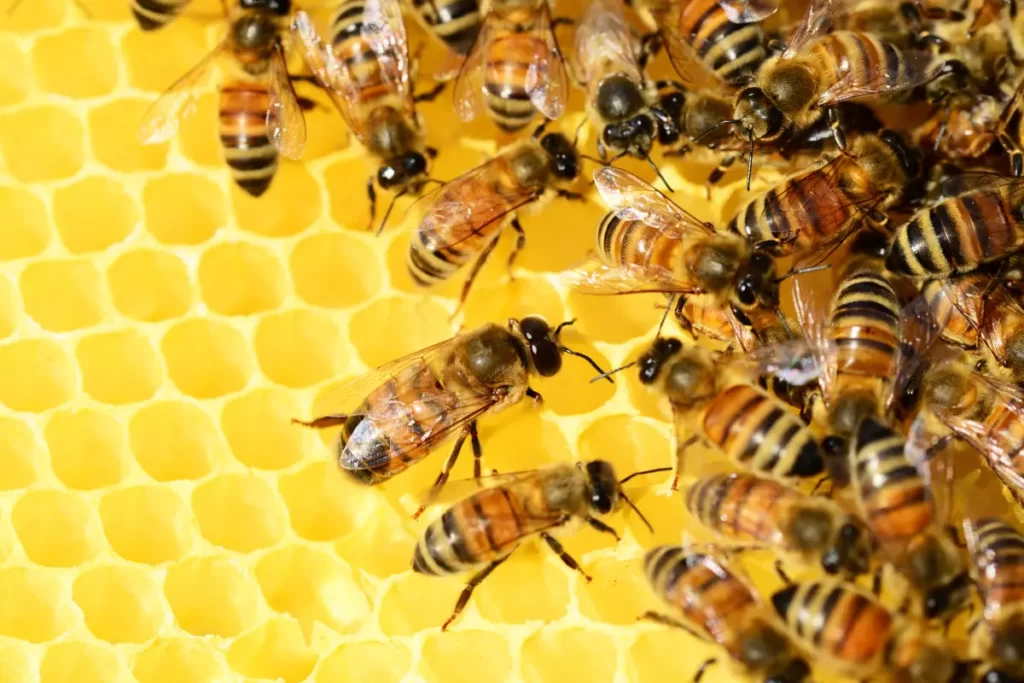
Dragonflies also eat bees and wasps. Even though bees and wasps can sting, they can’t escape from dragonflies. Adult dragonflies eat many different insects, not just mosquitoes and flies. Bees and wasps are common in many places, so dragonflies eat them too. However, dragonflies don’t specifically hunt for bees and wasps; they eat them when they can.
It’s important to know that while dragonflies eat bees and wasps, they don’t greatly affect their numbers compared to other threats like losing their homes, pesticides, and diseases. Overall, dragonflies are very helpful because they eat insects that are pests or carry diseases.
Ants
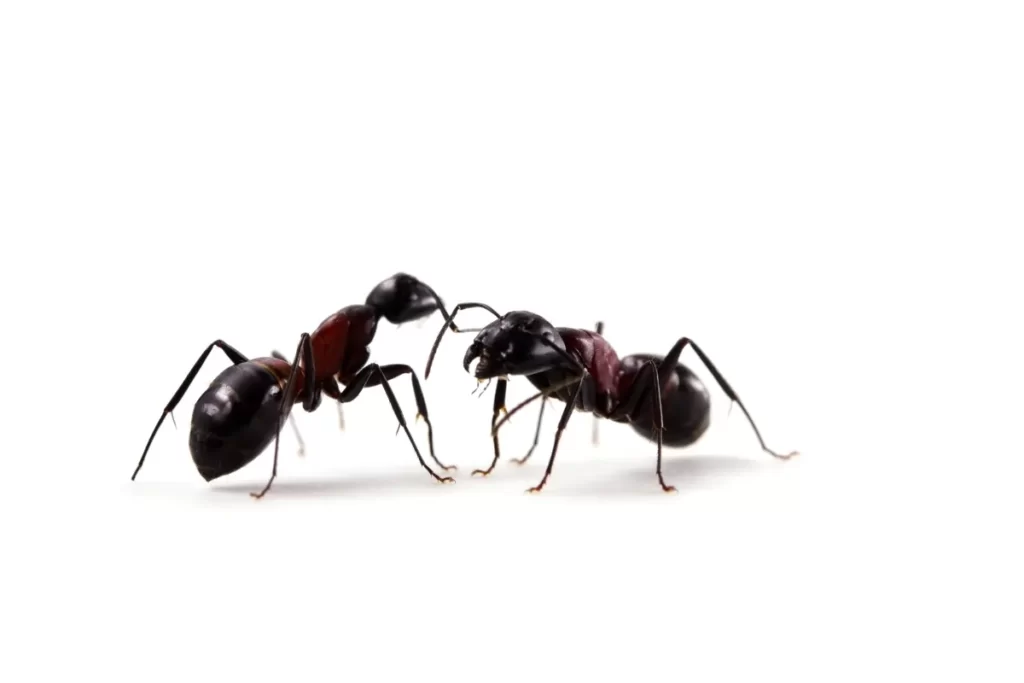
Dragonflies sometimes eat ants, which can be found almost everywhere on land. Normally, dragonflies catch their food in the air, so they don’t often eat ground insects like ants. But when they are young and live in water, they eat small water creatures and bugs that fall in, including ants.
Grown-up dragonflies might also eat ants, particularly flying ants, if there’s not much else to eat. It’s important to note that ants aren’t the main food for dragonflies and don’t greatly impact the ant population. Eating ants is just a small part of what dragonflies eat where they live.
Other Small Dragonflies
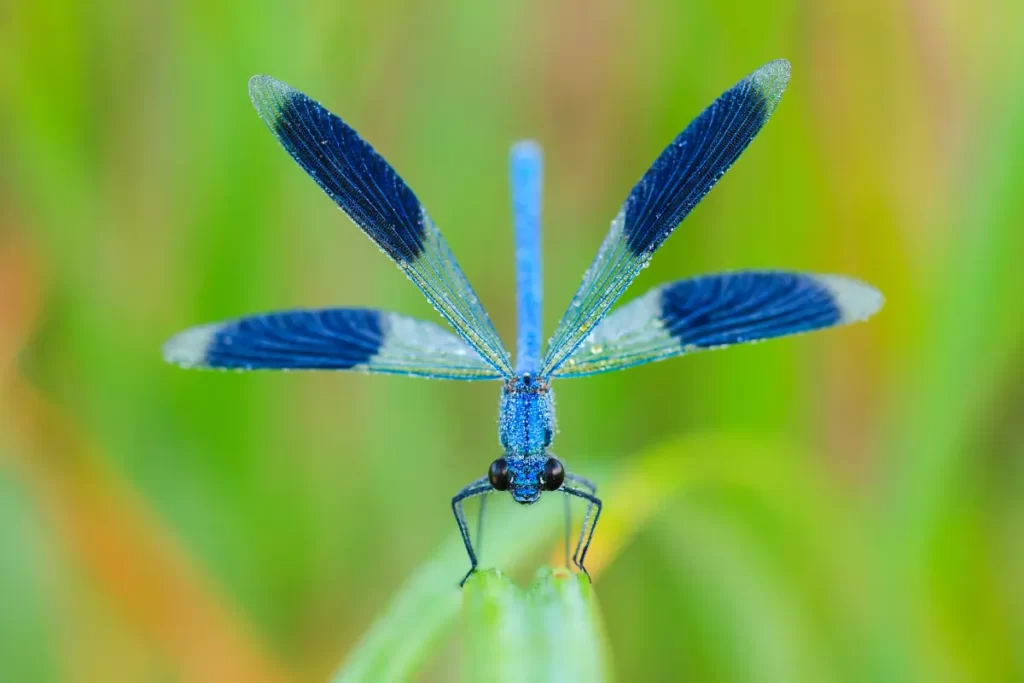
Dragonflies eat more than just other insects; they sometimes eat each other too. Bigger dragonflies often eat smaller ones, showing how tough life can be in the wild. This happens more often when dragonflies are young and live in the water. Young dragonflies, called nymphs, live with many other water animals, including other dragonfly nymphs.
There is often insufficient food for everyone, so bigger nymphs eat smaller ones to stay alive. This behavior happens less when dragonflies become adults. However, it still happens sometimes, especially when there is little other food. Even though it seems harsh, it is a normal way for dragonflies to survive and helps control the number of dragonflies.
Dragonflies and Their Hunting Techniques
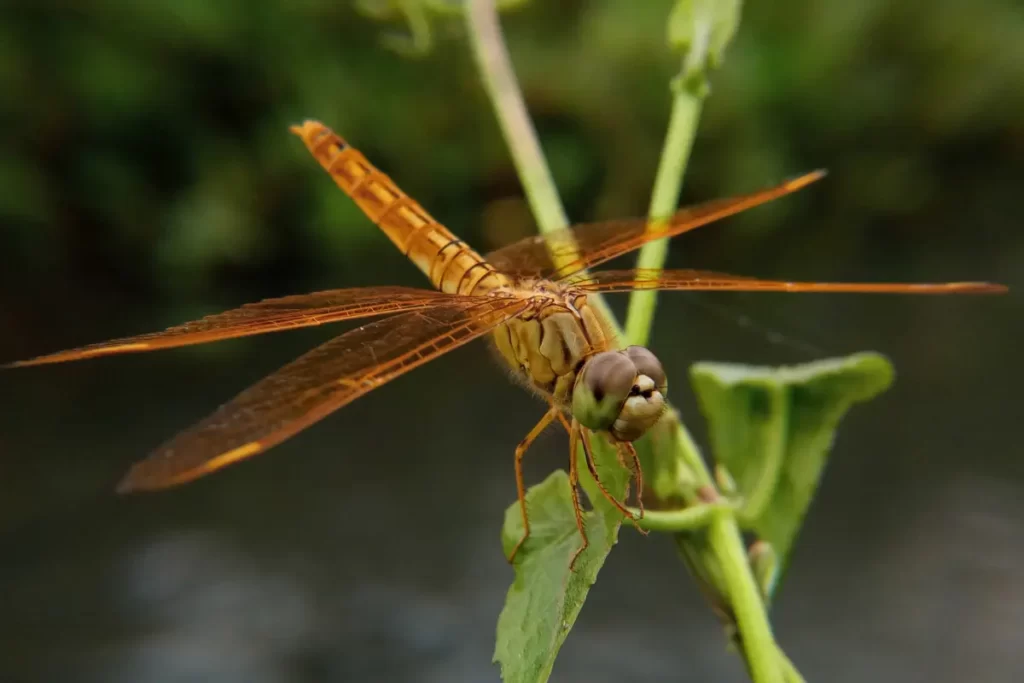
- Amazing Eyesight: Dragonflies have almost 360-degree vision because of their big, compound eyes. This helps them see potential food from far away and judge how fast and in what direction their target is moving.
- Great at Flying: Dragonflies are excellent at flying. They can hover, fly backward, change direction quickly, and go as fast as 30 miles per hour. This helps them chase and catch their food accurately.
- Sneaky Hunters: Dragonflies often use a sneaky way of hunting. They sit on a twig or a blade of grass and wait for an insect to come by before they quickly attack.
- Mid-Air Catching: Dragonflies are good at catching food while flying. They use their back legs, which have spines, to grab their food in the air. Watching them do this is amazing and shows how good they are at hunting.
- Saving Energy: Dragonflies are smart hunters. They like to hunt where there are many insects, making it easier to catch food and saving energy.
- Special Mouthpart: Baby dragonflies, called nymphs, that live in water have a special mouth part called a ‘labium.’ They can quickly extend this to catch small water animals. This is important for them to survive in water.
- Eating Each Other: Sometimes, when there is not much other food, dragonflies might eat each other, with bigger ones eating smaller ones. This helps them survive in tough situations.
- Choosing Food: Dragonflies choose their food carefully. They usually go for weaker, slower, or harder insects because they are easier to catch. This helps them catch more food and save energy.
Dragonflies And Wasps Interaction
The relationship between dragonflies and wasps is complicated and interesting. Both of them are top hunters in their areas, and it can be intense when they meet.
Dragonflies are excellent flyers with sharp eyesight, making them great at catching many different insects, including wasps. Wasps, however, have stingers and can defend themselves aggressively. This creates an exciting battle for survival when they meet.
Wasps usually stay on the ground or in plants and only fly to find food or mates. On the other hand, dragonflies spend most of their adult lives flying, looking for food, and guarding their area. They usually meet when a wasp looking for food accidentally flies into a dragonfly’s area.
The dragonfly, always searching for food, might try to catch the wasp. But wasps are not easy to catch. They have a poisonous sting and can fight back strongly if attacked. This makes it harder for the dragonfly to catch the wasp without getting stung.
Wasps As Dragonfly Food

Even though wasps can defend themselves, sometimes they are eaten by dragonflies. Dragonflies eat what they can find, and while they don’t specifically hunt wasps, they will eat them if they can. Dragonflies usually catch their food by grabbing them with their legs covered in spines and eating them while flying or after landing.
Eating wasps is not a dragonfly’s first choice, but it happens when many wasps are around. In some places, wasps might be a bigger part of a dragonfly’s diet, while in others, they might be eaten less often.
It’s important to know that even though dragonflies eat wasps, they don’t greatly affect the number of wasps compared to other natural predators and challenges wasps face, like losing their homes and pesticides.
Are Wasps Safe From Dragonflies?
No, Wasps are not completely safe from dragonflies. Even though wasps are not the main food for dragonflies, they can sometimes be caught and eaten by them. Dragonflies catch different kinds of flying insects, and even though wasps can sting and defend themselves aggressively, dragonflies can still catch them because of their sharp eyesight and excellent flying skills.
Whether a wasp gets caught by a dragonfly depends on different things, like if there are other insects to eat, the kind of dragonfly, and how well the wasp can defend itself. Even though dragonflies don’t specifically go after wasps, they will try to catch and eat them if they can.
Dragonflies eating wasps is more about taking a chance than preferring them, and it doesn’t have a big impact on the number of wasps compared to other natural predators and problems like losing their habitat and pesticide exposure.
Are Wasps Prey To Dragonflies?
Yes, dragonflies can hunt wasps. Even though wasps are not the main food for dragonflies, they can be caught and eaten if possible. Dragonflies eat different insects like mosquitoes, flies, and even smaller dragonflies.
Even though they don’t specifically hunt wasps, if there are not many other insects to eat, they can be hunted depending on the kind of dragonfly. Even though wasps have strong defenses, they can still be caught by dragonflies.
Dragonflies usually catch their food while flying, and their ability to quickly change direction and hover helps them catch flying insects, including wasps. Different things affect how often this happens, such as the availability of other insects to eat, the kind of dragonfly, and how well the wasp can defend itself. However, wasps are among the many different insects that dragonflies can eat.
How Do Dragonflies Capture Wasps?
Dragonflies catch wasps with sharp eyesight, excellent flying skills, and special hunting methods.
- Dragonflies have big eyes made of many small parts that allow them to see almost all around them. This helps them see and follow flying insects like wasps from far away.
- Dragonflies are experts at flying. They can hover, fly backward, and quickly change direction. This helps them chase and catch quick insects like wasps while flying.
- Dragonflies have legs covered in spines that help them grab and hold onto their food while flying.
- Dragonflies can figure out where to fly to catch their food and then quickly and accurately fly there to catch it.
- Dragonflies don’t specifically hunt wasps but take any chance to catch food, including catching wasps, if possible.
Other Insects That Eat Wasps
Praying Mantises
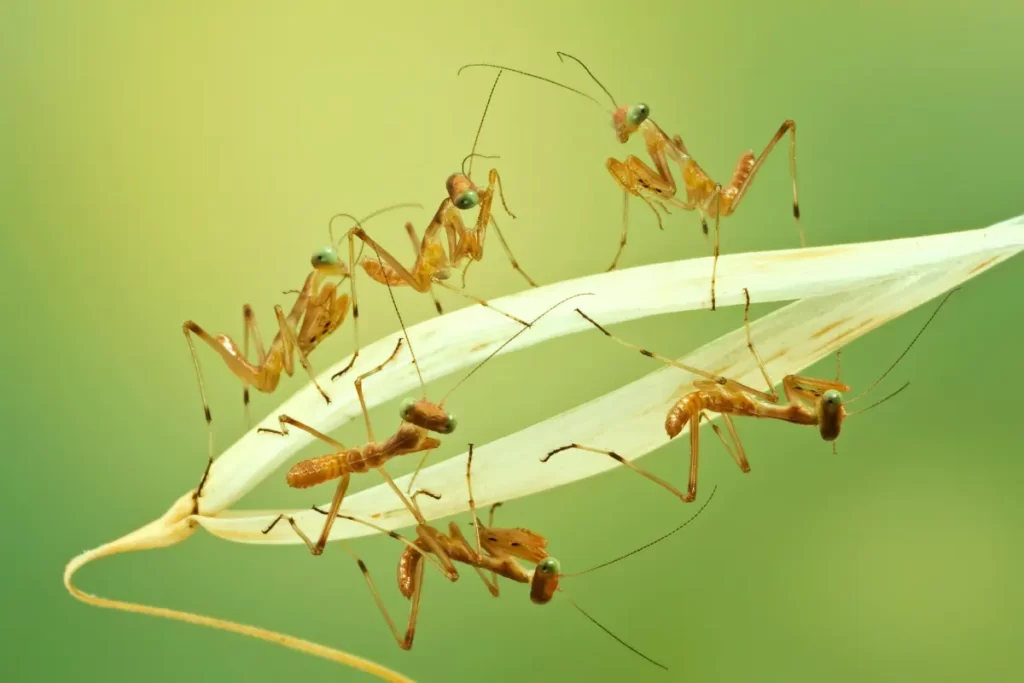
Praying mantises are insects that eat other insects, including wasps. They have special front legs with sharp spikes to grab and hold food. Praying mantises like to surprise their food and stay still until a wasp or other insect comes close enough. When the insect is close enough, the mantis quickly grabs it with spiky legs. Even though there is a chance of getting stung, praying mantises are good at catching and eating wasps.
Spiders
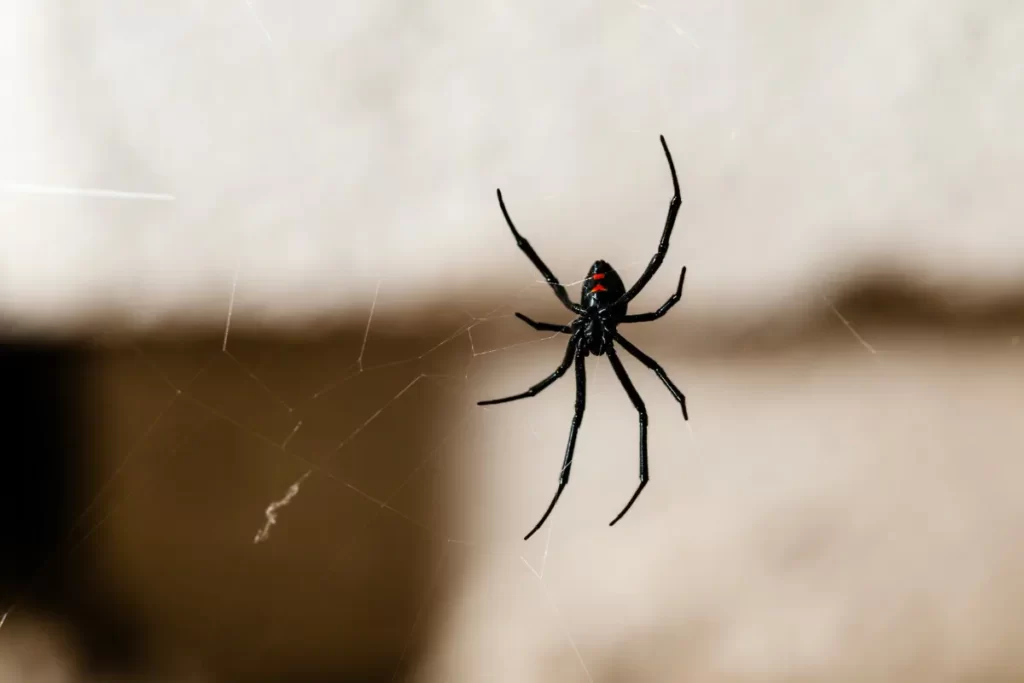
Different kinds of spiders can catch and eat wasps. Orb-weaving spiders, for example, make detailed webs to catch flying insects like wasps. When a wasp gets stuck in the web, the spider quickly wraps it up in silk and injects poison. Some spiders, like the golden silk orb-weaver, are known for being very good at catching wasps.
Robber Flies
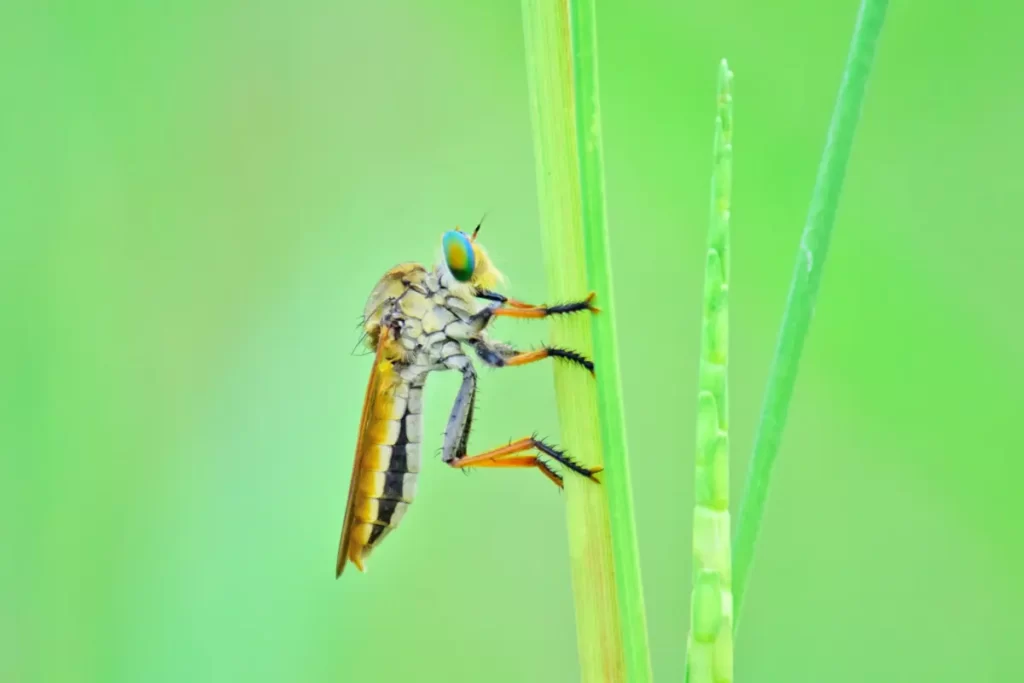
Robber flies are predators that catch and eat other flying insects, including wasps. They use sharp mouthparts to stab their food and inject saliva that stops the insect from moving and turns its insides into liquid. Robber flies are good at flying and can catch wasps while flying.
Beetles
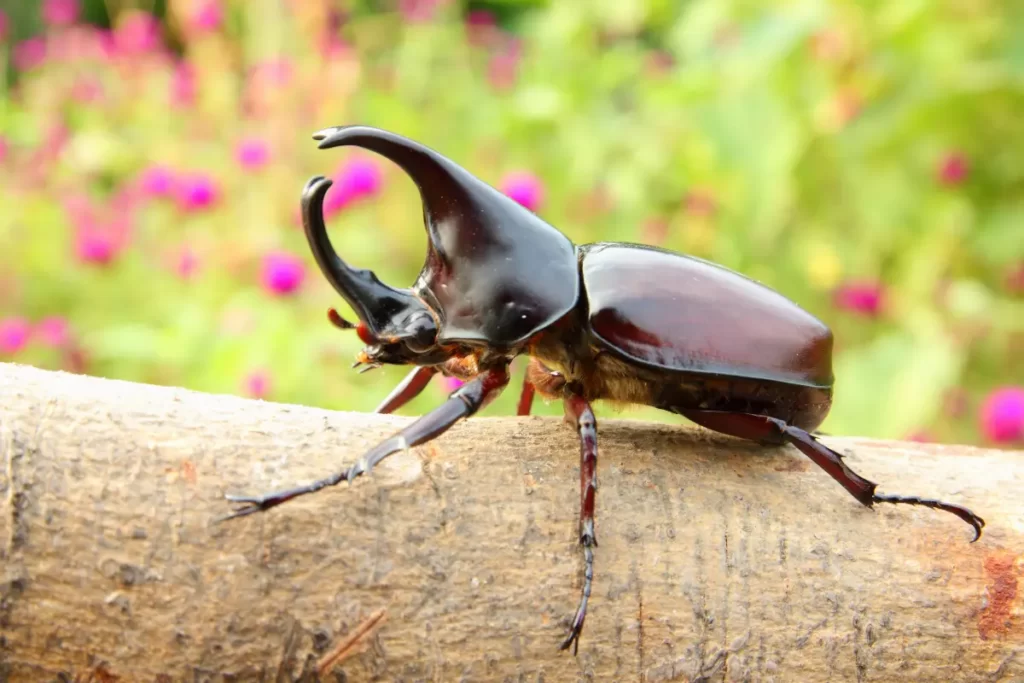
Some types of beetles eat wasps. Ground beetles, for example, eat many different insects, including wasps. These beetles are usually found on the ground and might catch and eat wasps that come too close. Bigger beetles, like the European hornet beetle, also eat wasps. These beetles have strong jaws to crush and eat their food.
Centipedes
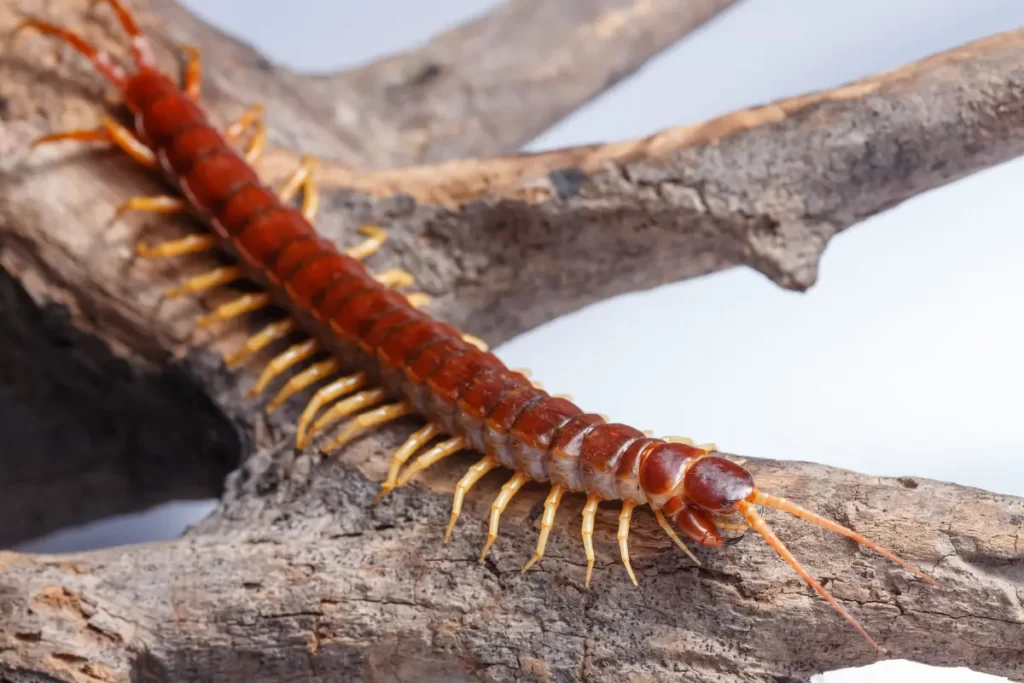
Some types of centipedes eat wasps. Centipedes are carnivorous arthropods that eat many different insects and small animals. Bigger centipedes, like the Amazonian giant centipede, can catch and eat wasps. Centipedes use their poisonous fangs to stop their food from moving before eating it.
Conclusion
In nature, how animals hunt and are hunted are as different as the animals themselves. Take dragonflies, for example; they are amazing hunters who can catch all sorts of insects, even wasps with strong ways to defend themselves. And even though wasps have stingers, they are still hunted by different kinds of insects. This balance in nature shows how strong and flexible Earth’s creatures are. So, how animals hunt and are hunted shows the complexity and diversity of life on our planet.

